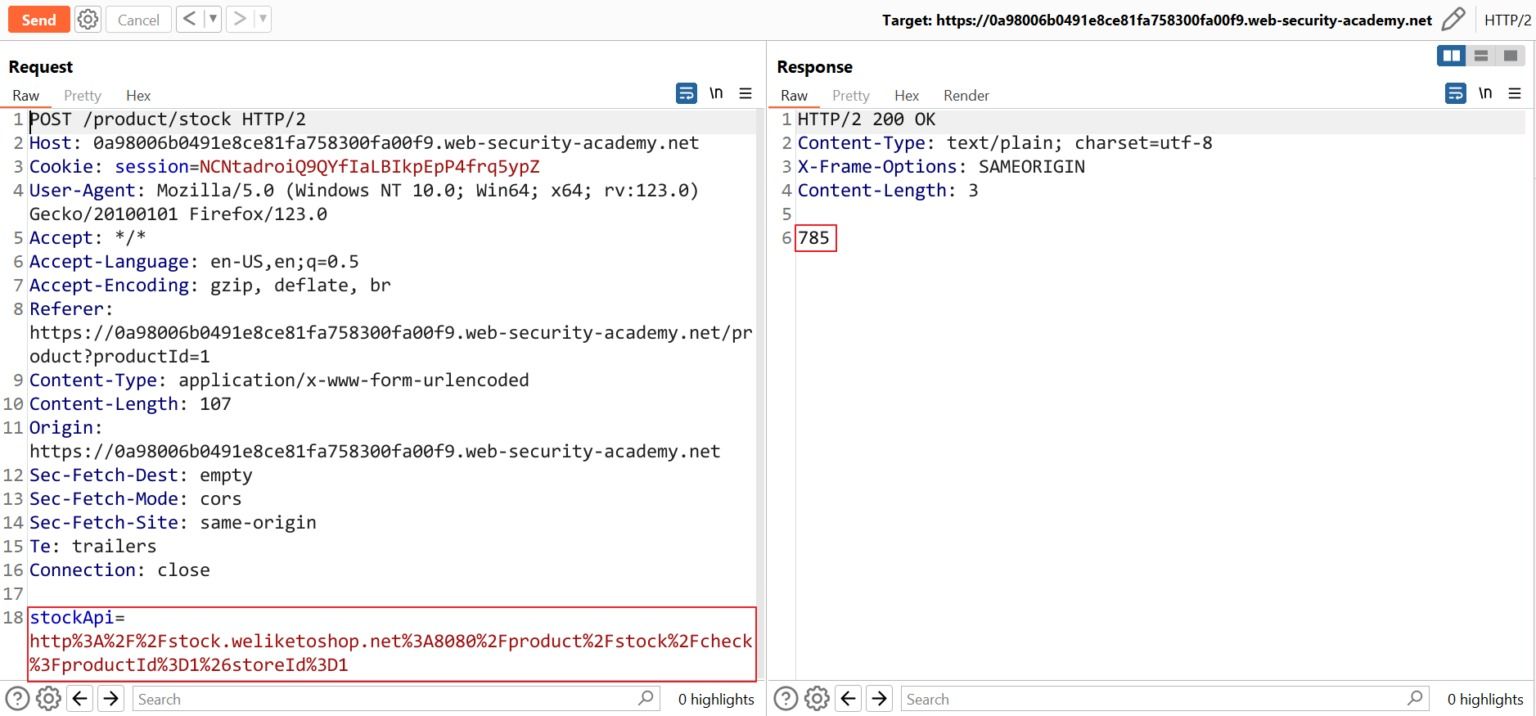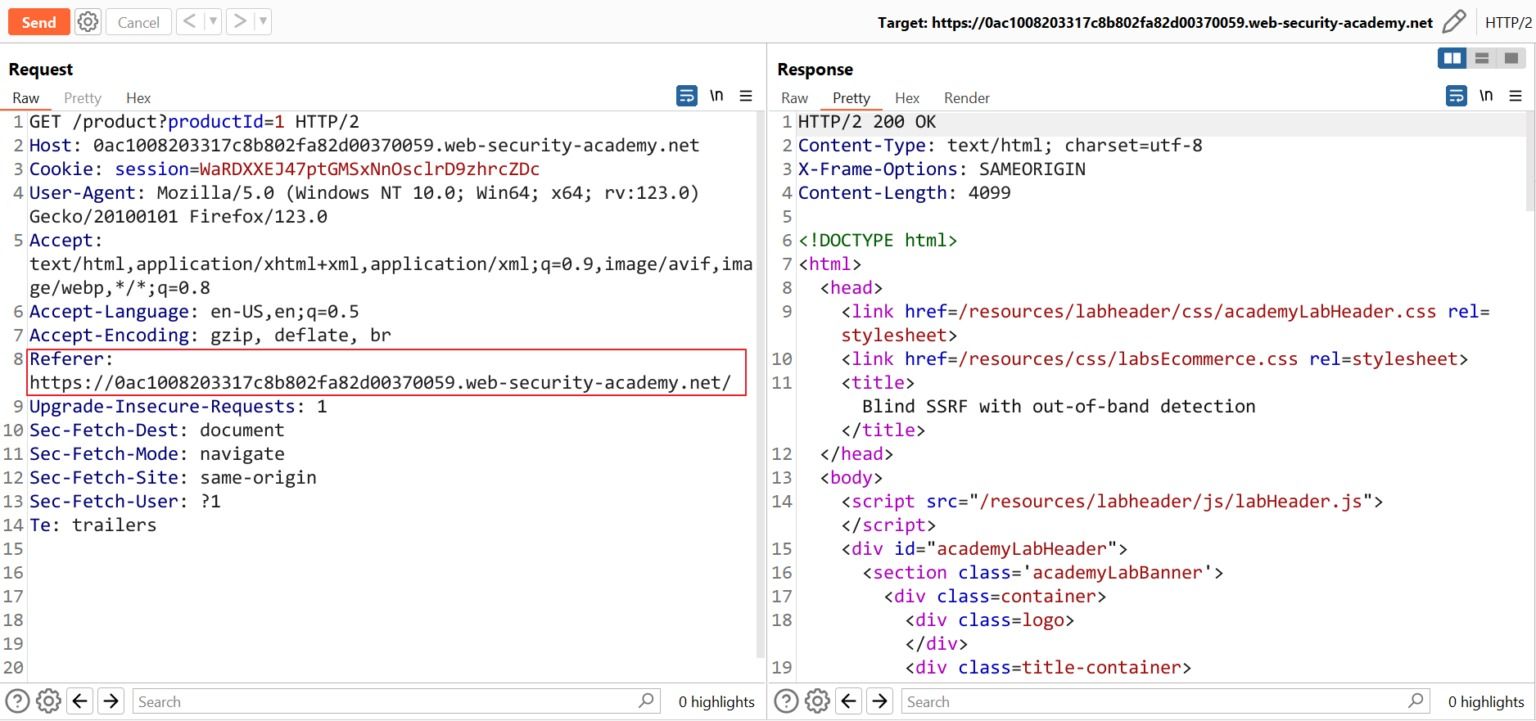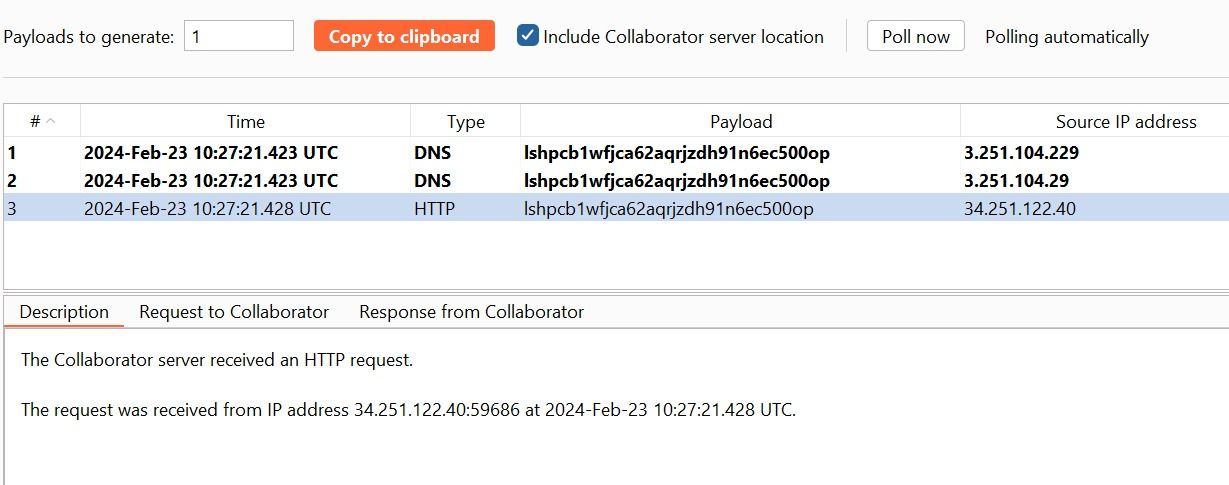Threat Beyond The Front-end: SSRF
Lata Parmar
Feb 23, 2024
•
6 Min
Lata Parmar
Feb 23, 2024
•
6 Min
TABLE OF CONTENTS
Share
Welcome to our blog dedicated to exploring the intricate world of Server-Side Request Forgery (SSRF). In today’s digital landscape, where the internet serves as the backbone of countless services and applications, understanding the vulnerabilities and risks associated with SSRF is paramount. In this, we’ll delve into the fundamentals of SSRF, it’s potential impact on web security, common attack vectors, preventive measures, and much more.
Server-Side Request Forgery (SSRF) is a type of web application vulnerability that allows an attacker to send Unauthorized requests from the Vulnerable web server to other internal or external systems, resources, or services. This can lead to a range of attacks, including data theft, privilege escalation, and even remote code execution.
Simple SSRF (In Band)
Basic or Simple SSRF is typically the most critical issue. In these scenarios, data from an arbitrary URI can be fetched from an internal service and will be returned to the attacker.
Blind SSRF (Out-of-Band)
Blind SSRF occurs when you never get any information about a target Service from the initial request. Typically, an attacker will provide a URL, but data from this URL will never be returned to the attacker. To confirm a vulnerability in this case, an attacker must use Burp Collaborator, DNSbin , webhook or a similar tool. These tools can confirm that a server is vulnerable by forcing it to make DNS or HTTP requests to an attacker-controlled server. Blind SSRF is easy to validate but difficult to exploit.

SSRF attacks typically involve three components: The vulnerable web application, the attacker, and the target system. Here’s how an attack might work:
Example:
Imagine a shopping application that let the user view whether an item is in stock in a particular store. To provide the stock information, the application must query various back-end REST API’s. It does this by passing the URL to the relevant back-end API endpoint via a front-end HTTP request.
1. User views the stock status for an item, their browser makes the following request:
POST /product/stock HTTP/1.0Content-Type:
application/x-www-form-urlencoded
Content-Length: 118
stockApi=http://stock.weliketoshop.net:8080/product/stock/check%3FproductId%3D6%26storeId%3D
2. The server to make a request to the specified URL, retrieve the stock status, and return this to the user.

3. Here,an attacker will modify the request to specify a URL local to the server:
POST /product/stock HTTP/1.0 Content-Type: application/x-www-form-urlencoded Content-Length: 118 stockApi=http://localhost/admin

4. The server fetches the contents of the /admin URL and returns it to the user.

An attacker can visit the /admin URL, but the administrative functionality is normally only accessible to authenticated users. This means an attacker won’t see anything of interest. However, if the request to the /admin URL comes from the local machine, the normal access controls are bypassed. The application grants full access to the administrative functionality, because the request appears to originate from a trusted location.
2. Blind SSRF:
1. Visit a product, intercept the request in Burp Suite, and send it to Burp Repeater.

2. Go to the Repeater tab. Select the Referer header, right-click and select “Insert Collaborator Payload” to replace the original domain with a Burp Collaborator generated domain. Send the request.

3. Go to the Collaborator tab, and click “Poll now”. If you don’t see any interactions listed, wait a few seconds and try again, since the server-side command is executed asynchronously.

See some DNS and HTTP interactions that were initiated by the application as the result of your payload.
http://example.com/ssrf.php?url=https://abc..com/?redirect=https://attacker.com
1. Converting IP to hexadecimal:–
Example- Converting http://192.168.39.343 to doted hex – http://c0.a8.00.01 and dot less hex http://0xc0a80001
2. Converting IP to Decimal:-
Example-http://0177.0.0.1/= http://127.0.0.1
or
http://2130706433/=http://127.0.0.1
3. Converting IP to Octal:–
Example- Converting http://192.168.0.1 to dotted octal http://0300.0250.0000.0001 and dot less http://030052000001
4. Using wildcard DNS:–
For Example- 10.0.0.1.xip.io resolves to 10.0.0.1 – There are many site provide wildcard dns like xip.io, nip.io., Ip6.name, localdomain.pw
5. Using enclosed alphanumerics:-
Example -http://ⓔⓧⓐⓜⓟⓛⓔ.ⓒⓞⓜ = example.com
As we wrap up our exploration of Server-Side Request Forgery (SSRF), we want to express our gratitude for joining us on this enlightening journey. We hope that delving into the fundamentals, impact, and preventive measures surrounding SSRF has equipped you with valuable knowledge to bolster your web security defenses.
Share